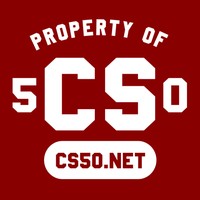ប្រព័ន្ធអេកូឡូស៊ីដែលភាគច្រើនដូចជាហាងលក់កម្មវិធីគឺមានទាំងបើកចំហឬអភិរក្ស. ប៉ុន្ដែហេតុអ្វីយើងមិនអាចមានទាំង? ផងដែរ, យើងអាចធ្វើបាន — អ្វីទាំងអស់ដែលអ្នកត្រូវការគឺមានបីកិរិយាសព្ទ: បោះពុម្ពផ្សាយ, ស្វែងរក, និង ដូច. ដែលទៅសម្រាប់បច្ចេកវិទ្យានិងអ្វីផ្សេងទៀត.
ជាធម្មតាវាមានជម្រើសពីរគឺមាននៅពេលដែលអ្នកចង់បោះពុម្ពផ្សាយកម្មវិធីមួយ: បោះពុម្ពផ្សាយវាទៅអ្វីមួយដូចជាប្រព័ន្ធប្រតិបត្តិការ iOS កម្មវិធីទីផ្សារ App Store (កន្លែងដែលមនុស្សនឹងរកឃើញកម្មវិធីរបស់អ្នក, ប៉ុន្តែការត្រួតពិនិត្យក្រុមហ៊ុន Apple អាចបដិសេធការដាក់ស្នើរបស់អ្នក) ឬគ្រាន់តែដាក់វានៅលើគេហទំព័ររបស់អ្នក (ដែលជាកន្លែងដែលវាជាការងាយស្រួលក្នុងការបោះពុម្ពផ្សាយ, ប៉ុន្តែមិនមាននរណាម្នាក់ធានានឹងឃើញវា។) Not the greatest set of options.
Isn’t there a way to combine the strengths of both of these to make for the best possible experience for both publishers and consumers? I think there is. It’s called an open and curated ecosystem. Let’s take a look at:
- What open និង curated ecosystems are
- Examples of open and curated ecosystems
- What you need to make an open and curated ecosystem
- Examples of these ecosystems beyond just technology
and see if we can discover something about the power of crowdsourcing, innovation, and the three verbs បោះពុម្ពផ្សាយ, ស្វែងរក, និង ដូច.
Curated vs. open ecosystems
The iOS App Store and open internet, among others, are app ecosystems — places where apps can be published and found. And I think the big factors that differentiate one ecosystem from another are whether the ecosystem is open, where anyone can publish apps and whether it is curated, where the best apps rise to the top and users are assured quality apps. That’s the major difference between the iOS store and the internet at large, which I mentioned earlier.
Let’s look at examples of curated and open ecosystems and what differentiates them.









